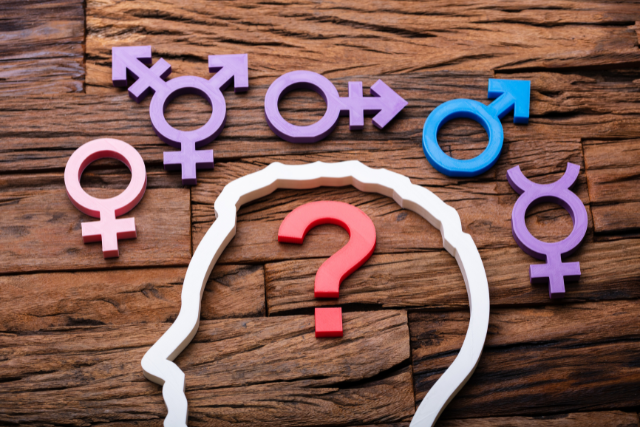Understanding X Gender Markers: Why They Matter and How They Empower
Introduction: The Importance of Inclusive Gender Markers
In a world that is progressively recognizing the spectrum of gender identities, the implementation of X gender markers represents a crucial step towards inclusivity and equality. This article delves into the significance of X gender markers, exploring their impact on non-binary and gender non-conforming individuals, and addressing common questions and concerns.
The Evolution of Gender Markers
The Traditional Binary System
For years, official documents have been limited to binary gender markers – 'M' for male and 'F' for female. This system fails to acknowledge the existence of non-binary, genderqueer, and other gender non-conforming individuals.
The Introduction of X Gender Markers
The introduction of the X gender marker provides a non-binary option, acknowledging and validating the identities of those who do not fit within the traditional binary framework.
Why X Gender Markers Matter
Affirming Identity and Dignity
X gender markers allow individuals to have their gender identity accurately reflected in official documents, which is essential for their dignity and recognition. This affirmation can significantly improve mental health and well-being by reducing instances of misgendering and the need for constant explanation.
Legal and Social Implications
Legal recognition of non-binary identities helps pave the way for broader social acceptance. It ensures that non-binary individuals have the same rights and protections as others, fostering a more inclusive society.
Practical Benefits
From travel to employment, having an accurate gender marker can simplify various aspects of life. It can reduce the risk of discrimination and harassment, making everyday interactions smoother and more respectful.
Addressing Common Concerns and Misconceptions
Misuse of X Gender Markers
A common concern is the potential misuse of X gender markers. However, studies have shown that the benefits far outweigh the risks. Countries and states that have implemented X gender markers have not reported significant misuse issues.
Impact on Data Collection and Statistics
Another concern is the impact on data collection. While it may complicate data categorization, it ultimately leads to more accurate and comprehensive data that reflects the true diversity of the population.
Global Perspective: How Different Countries Handle Gender Markers
Pioneers in Gender Inclusivity
Countries like Australia, New Zealand, and Canada have been pioneers in recognizing non-binary genders. These nations have successfully implemented X gender markers in various official documents, setting a precedent for others to follow.
Challenges and Progress in the United States
In the U.S., the recognition of X gender markers varies by state. Some states have adopted inclusive policies, while others are still in the process of considering or implementing these changes. The federal government’s stance continues to evolve, reflecting the ongoing push for nationwide acceptance.
How to Change Your Gender Marker
Steps to Take
Changing your gender marker involves several steps, including legal documentation and potential medical verification. While the process varies by location, it typically includes:
- Obtaining a court order or affidavit.
- Updating identity documents, such as driver’s licenses and passports.
- Informing institutions like banks and employers.
Resources and Support
Numerous organizations offer support and guidance throughout this process. Lambda Legal, for example, provides resources and legal assistance to help individuals navigate the complexities of changing their gender marker.
Current Data and Statistics
According to recent studies by The Williams Institute, there are approximately 1.2 million non-binary adults in the United States alone. This data underscores the importance of implementing inclusive policies that recognize and validate diverse gender identities.
The Road Ahead: Advocacy and Continued Progress
Ongoing Advocacy Efforts
Advocacy groups play a critical role in pushing for the adoption of X gender markers. Organizations such as The National Center for Transgender Equality and GLAAD work tirelessly to promote understanding and acceptance of non-binary identities.
The Importance of Continued Progress
While significant strides have been made, there is still much work to be done. Continued advocacy and education are essential to ensure that non-binary individuals receive the recognition and respect they deserve.
Conclusion: Embracing Diversity for a Better Future
The adoption of X gender markers is a vital step towards a more inclusive society. By recognizing and validating the identities of non-binary individuals, we move closer to a world where everyone is treated with dignity and respect.

